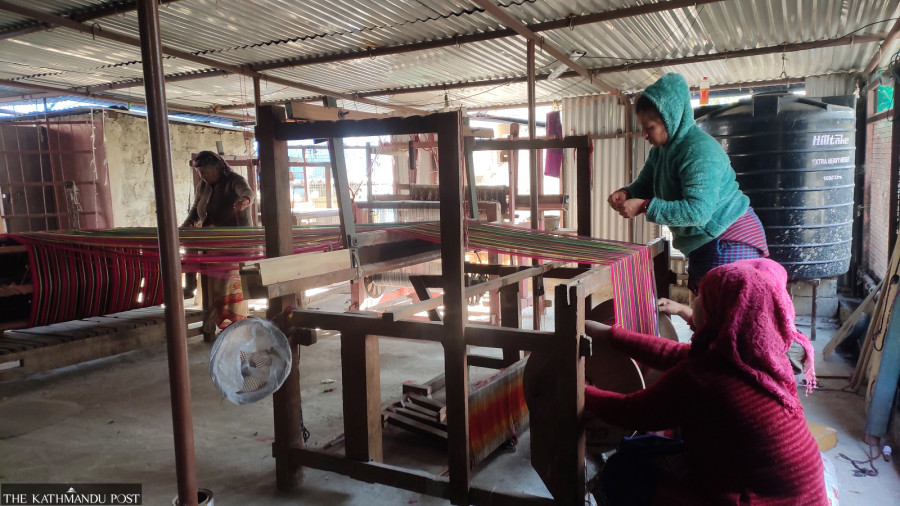Money
Woollen carpets of Darchula face identity crisis
Locals say production has started to decline due to the availability of cheaper Chinese carpets available in the market.
Manoj Badu
Woollen carpets of Darchula are facing an identity crisis as cheaper Chinese carpets have flooded the market.
Darchula, a small town in far west Nepal, is one of the old trade routes between India and Tibet, and it boasts a rich tradition in woollen handicrafts, particularly carpets and knitwear, known for their intricate designs and soft texture.
The Shauka community was initially involved in weaving the carpets. Later, other communities took up the profession when the carpet demand started to rise in the market, particularly in the urban areas.
Lalit Prasad Bhatta, a local trader of Khalanga, said the local production has started to decline due to the availability of cheaper Chinese carpets available in the market.
“Until a decade ago, the government and other project officials visiting Jumla used to buy local carpets to give them as a souvenir,” said Bhatta. “The handmade carpet was popular.”
However, production has declined as there is no demand, he said.
“The imported carpets which are mostly machine-made have been gradually replacing the local production,” added Bhatta.
The craftsmen need to outsource the raw materials from the neighbouring districts and the indigenous technique is labour-intensive which makes hand-woven carpets costlier.
“As we are busy with other works, we weave them only for a month in a year,” said Janaki Budhathoki, a local of Tinerkheda at Vyas Municipality. “We can hardly make two carpets a month.”
According to the locals, raw materials worth Rs7,000-8,000 are required to prepare a carpet and the final cost reaches around Rs12,000-15,000, including the labour cost.
“The Chinese carpets are available at Rs5,000-6,000 in the market,” said Budhathoki. “This is causing the decline of local carpets.”
Wooden looms can be found in each house of the indigenous Shauka community.
However, the majority of them have dumped the handlooms.
“There are only a few houses that have kept the handlooms,” said Budhathoki.
Parvati Bohora, 77, is a senior citizen still weaving carpets. “I will weave the carpet until I am physically capable,” she said. “Nobody in my family will continue this profession after I die.”
According to Bohora, houses with the elderly have a loom and only a few households have the manpower to weave the carpet. The number of commercial weavers is even lower.
“The buyers used to come in our doors before the foreign carpets were imported,” said Bohora. “Now we have to buy handmade carpets from the Indian market.”
The destruction of this profession is due to the low return on investment, said Dhiren Budhathoki, ward chair of Vyas Rural Municipality-2.
According to the ward chief, commercial production has faltered despite consistent training, counselling and financial aid to boost the production.
Locals weave carpets, blankets, sweaters, caps and more using the handloom. These warm clothes are preferred by locals living mostly in the highland.
The craftsmen previously used to make yarn out of wool. However, they prefer the wool mixed with thread that is available in the market these days, said the ward chair.
“This industry has a good future if the government is able to attract youths by providing sufficient training and grants.”
“We have to import costly raw materials from India,” said Gangotri Budhathoki, a local of Tinkar Tole at Khalanga. “Local production isn't able to flourish due to high investment and labour costs.”
Radhika Tinkari, a local, said that commercial production is difficult as it needs a huge investment. “The market is unreliable too.” “If we get the grants, we can commercially manufacture the carpets. But someone has to market it,” said Tinkari.




 14.12°C Kathmandu
14.12°C Kathmandu













%20(1).jpg&w=300&height=200)
